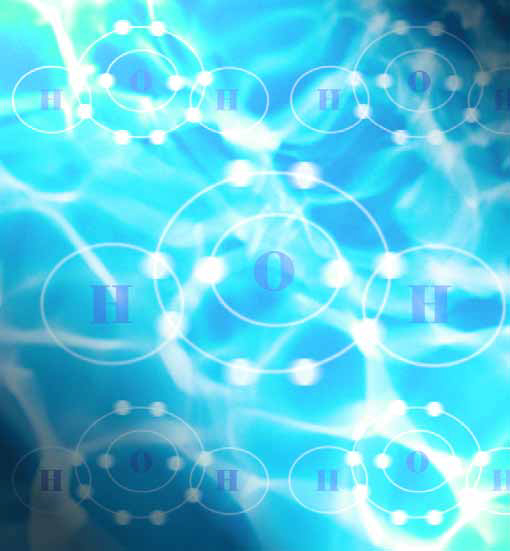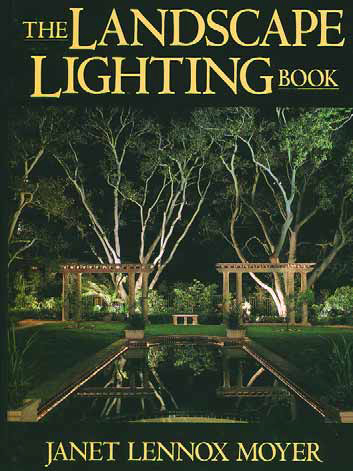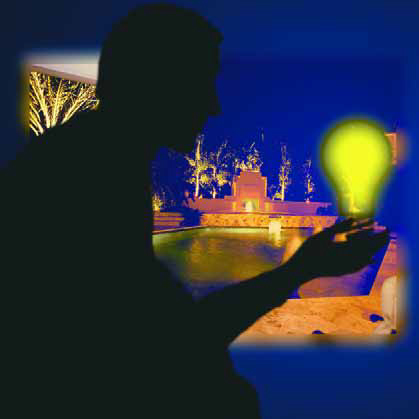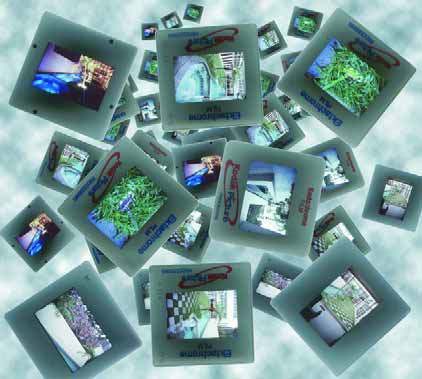techniques
Even watershapers who don't perform daily tests of water quality in the systems they design and/or build will benefit from being familiar with the various methods available for water analysis, says Michael Gardner of Taylor Technologies. Such knowledge, he notes, helps in starting up new systems, formulating chemical-treatment regimens, calibrating automatic controllers or simply educating those who'll care for the watershapes you create.
When it comes to watershapes designed for human interaction - including pools, spas and fountains - the chemical treatment of the water is a key safety issue that can be handled in a variety of ways. Indeed, says water-chemistry expert Jeff Freeman, so many products and so many approaches are available that the average designer or builder could probably use a bit of guidance to help them keep everything straight, both for themselves and their clients.
We all know that plants are beautiful in daylight. Perhaps less well known is the vast visual potential they posses when carefully and thoughtfully lit at night. It's no small challenge. Indeed, maximizing the beauty of most any landscape while also ensuring that your lighting design works well throughout the lifetime of the landscape requires a keen understanding of both plant materials and the lighting techniques that will bring them to life when the sun goes down. Furthermore, surrounding watershapes with well-lit spaces and foliage will add a distinctive aesthetic dimension to the overall design. To my mind, there's no substitute for paying attention to every plant in the plan, because overlooking any of them or ignoring the role each has to play in the overall landscape will almost invariably detract from the effectiveness of the lighting design. You can't overlook technology, either, or the need to sort through the variety of techniques that can be used to light plants while keeping an eye on a wide range of practical, aesthetic and creative issues. When you encompass all of this successfully, the results will often
Maximizing the potential of landscape lighting is always about thinking ahead - a philosophy that absolutely applies when it comes to planning and designing the lighting for a watershape. The process begins with a set of questions that should be considered at the outset of any project: Is the watershape to be the focal point of the composition, or is it to be one among equally important features such as plantings, sculptures or hardscape details? Is the feature to be visually prominent at night, or is it to blend in with the darkness? Will the water you are lighting be in motion, or are you working with a still surface? Observers and chief vantage points also come into play. If the feature will mostly be viewed from passing automobiles rather than by pedestrians, for example, the issue of glare must be directly considered for safety reasons. If the watershape is to be seen from a lit interior space, then we know that its lighting level must be equal to or greater than that of the interior lighting. Likewise, relative brightness is an issue in making the illuminated watershape work with the rest of an illuminated landscape. The most important need in all of this is for
Janet Lennox Moyer's The Landscape Lighting Book (John Wiley & Sons, 1992) is quite simply one of the finest textbooks I've ever read. Indeed, when it comes to resources on the often-elusive topic of landscape lighting, it's hard to imagine a more comprehensive resource. Moyer is a lighting designer and instructor who has made a career of lighting the night with a flair that has earned her a tremendous reputation in the United Sates and abroad. (Her first contribution to WaterShapes, coincidentally, appears in this issue - click here.) In reading her 282-page, richly illustrated book, it's easy to see why she's become so successful: There is so much detail about design and such a wealth of specific
When we think about how the environments we create are used, the first image that probably comes to mind is one of people enjoying themselves in or near the water on a beautiful, warm afternoon. That's natural - and a vision that's a big part of the watershape experience we set up for our clients - but it ignores the other half of the day when our clients are left to themselves with our work. The fact is that watershape owners are mostly working people who spend their days away from home earning their daily bread. So despite the fact that we build these things
The people who once inhabited modern-day Mexico's Yucatan peninsula were remarkably sophisticated. Their civilization was based on a deep-rooted knowledge of astronomy, mathematics, hydraulics and engineering. They quarried stone and moved it hundreds of miles on rollers, using this raw material and incorporating it into highly refined buildings, temples, roads and monumental works of art that rival those of the better-known cultures of ancient Europe, Africa and Asia. In 2001, I traveled extensively in the Yucatan to experience the region's culture and view masterworks from many centuries past. What I found was a sense of form, line and pattern in the ruins of
It's a simple notion: When designing illumination for fountains and for watershapes in general, we as designers have the opportunity to choreograph the interaction of light, sound and motion to create visually compelling experiences. Just as painters mix colors to create desired shades, moods and movement within their compositions, watershapers can use the sounds created by moving water, the water's visual effects, various materials of construction, the ambient (natural) light, any surrounding architecture and the tools of modern illumination technology to take these masterpieces to






















